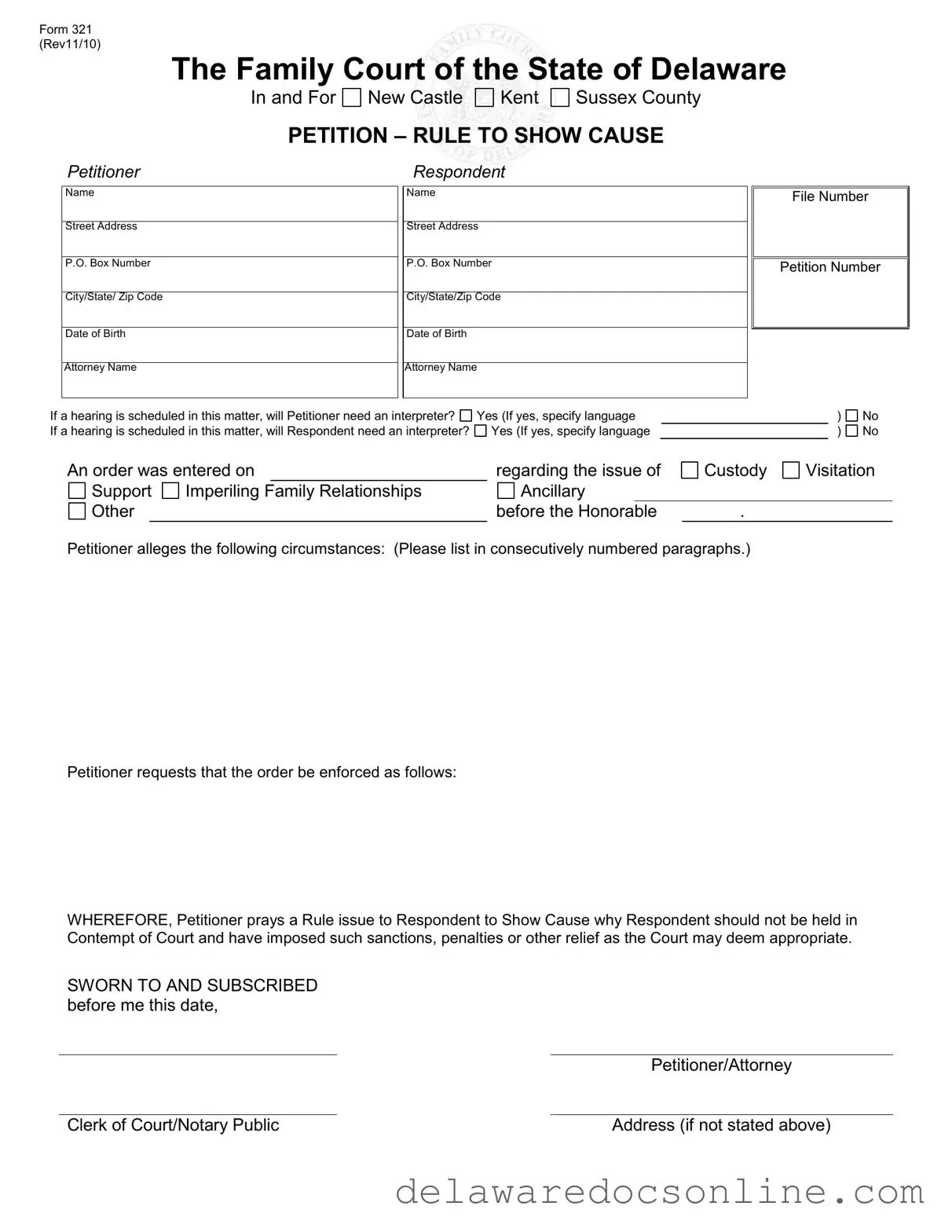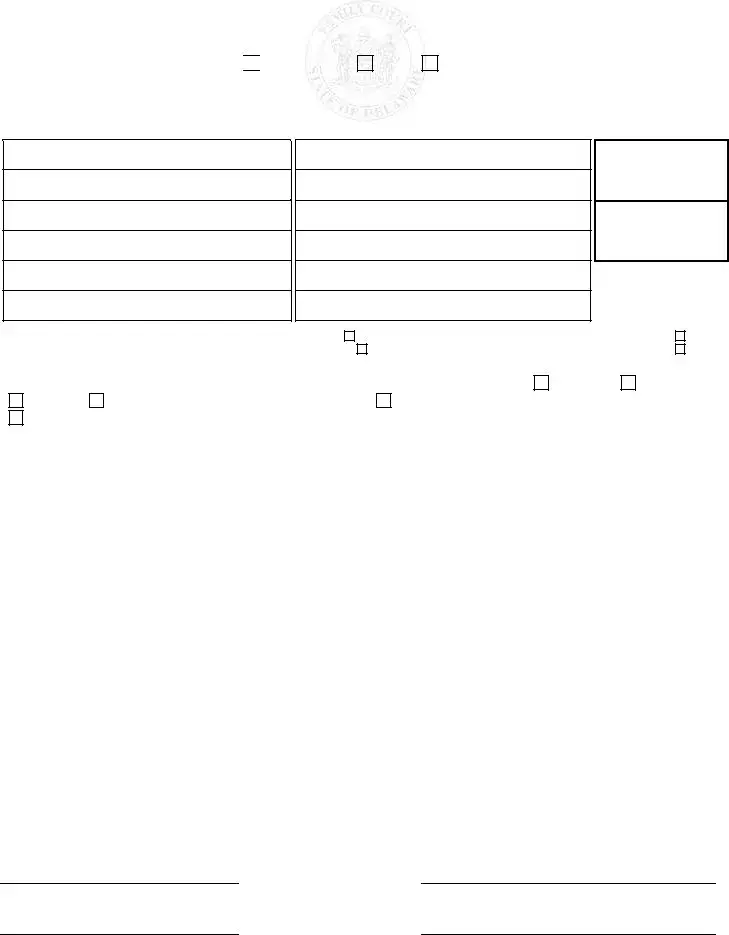Fill Out Your Delaware 321 Form
The Delaware 321 form is a legal document used in the Family Court of the State of Delaware to initiate a petition for a Rule to Show Cause. This form allows a petitioner to request enforcement of a previous court order related to issues such as custody, visitation, or support. By filing this form, individuals seek to address non-compliance and ensure that the court's decisions are upheld.
Make Your Delaware 321 Now



 New Castle
New Castle